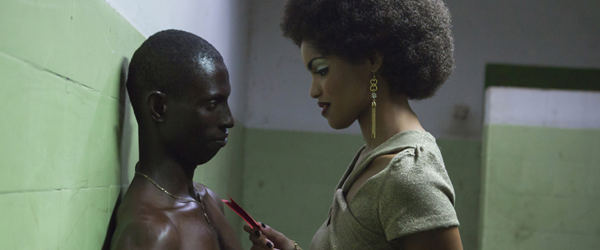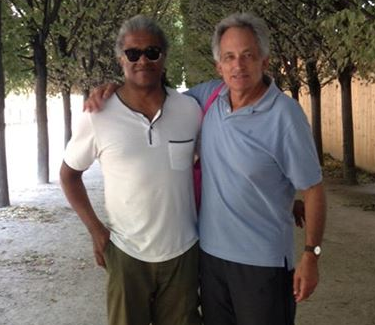Film geeks get a special treat this October when Film Independent at LACMA and Loyola Marymount University (LMU) School of Film and Television present 21 films from West Africa—most of which have never been seen here in the U.S. Caméras d’Afrique: The Films of West Africa, curated by Film Independent at LACMA curator Elvis Mitchell, kicks off October 3, at LACMA with the U.S. premiere of Grigris—Mahamat-Saleh Haroun’s critically acclaimed film that showed at this year’s Cannes—in a double feature with Harouns’s Bye Bye Africa. Plus, Haroun himself will be on hand for a Q&A with Mitchell. (A ticket for Opening Night gets you into to both films as well as a reception in-between with live music from renowned kora player Karamo Susso and his band.)
“This series brings me such joy,” said Mitchell. “Primarily because there’s nothing more exhilarating to me than to expose people to exciting new filmmakers and films, let alone bring attention to the art of an area that deserves more attention than it’s received in America. The works we’re playing demonstrate that film at its best, like any other art form, is idiosyncratic and universal.” Here, Stephen Ujlaki, Dean of the School of Film and Television at LMU, tells us why the ambitious series is not to be missed. It’s a once-in-a-lifetime opportunity to hear first-hand from world renowned West African filmmakers. Haroun is just one of the filmmakers traveling from all over the world to attend the series and share insights into their work. At least six esteemed West African directors, including Tey director Alain Gomis (along with the film’s star Saul Williams) and Buud Yam director Gaston Kaboré. For most, it will be their first time in the U.S. “They’re looking forward to this exposure,” says Stephen, “not only aesthetically and culturally, but politically, hopefully, it will be useful for them in terms of making contacts and for other filmmakers to be aware of their work.” It’s inspiring to see such extraordinary films made on such low budgets. “Mostly these filmmakers would get a small amount of financing from France, or some combination of money from the French CNC (Centre National de la Cinematographie)—the system that made the New Wave possible by making a percentage of all ticket sales available to filmmakers—and from other countries,” Stephen explains. “They’d put together little pieces of money from different countries in Europe and the African country they came from. These films were made with so little money—some were made for $30,000, $40,000, $50,000 and some even less, so there’s a very strong documentary feel. They were shot in the streets.” The political context surrounding the region’s film culture is unique—and uniquely fascinating. “France gives a lot of support to French-speaking filmmakers because they are very interested in propagating the French language and they are interested in cultivating a more indigenous film culture,” says Stephen. “There is only just now beginning to be an indigenous market in these countries, and that’s really significant because these films get shown in Europe, but not in their own countries. So that raises the question of who were these films made for? Because the money comes from Europe, there’s a sophistication to the work that appeals to Europeans, but the idea was to create indigenous culture in their own countries. The irony is that the filmmakers who have most benefitted from the support France has given to the former colonies are the directors who have been the most integrated into European culture. They know how to play the game and they know what Europeans want, so it’s created this schizophrenic situation that’s made it hard for an indigenous West African film culture to grow.” You’ll see a perspective on West Africa that Americans rarely see in film. “Most of these films have never been shown in the U.S.,” says Stephen. “When we’ve asked the directors, for the most part they’ve had zero distribution. Africa is the next continent to discover, and this is West Africa as seen by West Africans. They are taking ownership of their image. The Africa we’ve seen in film has often been through the eyes of Europeans, and it’s a lot about the dysfunction and poverty and disaster of Africa—a lot of the stuff that’s been the result of imperialism and colonization. There’s a fixation on the dysfunction of Africa, and it is in no way the way Africans see their countries. There’s another part of the story.” Check out the full program line-up. Discounted ($5) tickets are on sale now for Film Independent Members, as well as LACMA Film Club and The New York Times Film Club members. On September 19 at 5:00 pm, $10 tickets go on sale to the general public. RSVP for free community screenings on the LMU campus.

